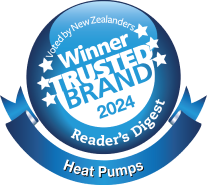Hybrid VRF (HVRF) bridges the gap between VRF / VRV solutions and heat recovery chiller plant, offering an alternative to common hydronic systems while still retaining the inherent benefits associated to the water-based options.
The HVAC market has been using water as a refrigeration and heating medium for many years, with chilled water being a safe, reliable refrigerant with a number of beneficial characteristics. Chillers, hot water heat pumps and 4 or even 6 pipe hydronic solutions have been utilised in large commercial buildings for many decades.
Simultaneous heating and cooling with full heat recovery
Heat recovery chiller systems are considered the crème-de-la-crème of HVAC solutions, incorporating the inherent efficiencies only possible through heat recovery with the comfort and security of water as the medium being circulated into occupied spaces. However, these have been a largely uneconomical option for small to medium scale applications.
The economic hydronic heat recovery solution
The Hybrid VRF (HVRF) product category bridges the gap between VRF / VRV solutions and heat recovery chiller plant, offering an alternative to common hydronic systems while still retaining the inherent benefits associated to the water-based options.
Hybrid VRF places itself in the market as an economic hydronic heat recovery solution which can be applied from high-end residential homes and the small commercial market right through to a large scale modular solution.
All the benefits of VRF with significantly lower global warming potential
With the adoption of global initiatives to reduce greenhouse gases and local legislative requirements with regards to occupant safety, HVRF provides design engineers and mechanical contractors the mitigation of risk associated with circulating refrigerants into occupied spaces. Furthermore it also reduces the potential global warming impact the larger refrigerant volume imparts; offering a saving on associated costs.

Hybrid VRF is the new VRF standard in New Zealand for both large and small applications
In the New Zealand market alone, BDT have seen a huge uptake of Hybrid VRF in the market. With over 5MW of heating capacity ordered to date across 42 projects Hybrid VRF applications are growing.
The largest Hybrid VRF project in the New Zealand market currently in construction incorporates 512kW cooling and 575kW of heating across 11 HVRF systems and is due for completion in FY21. This scale of project is a prime example of situations where a hydronic solution could have been applied however the HVRF alterative offered ease of construction, cost savings, modularity and redundancy reduction in the case of a mechanical failure.
Of course on the other hand, smaller systems can offer the benefits of hydronic architecture to projects that may be of a scale in which it is not economic to outlay the capital cost associated to a 4 pipe solution.
One such case is PGG Wrightsons Seeds wherein the developer Ngai Tahu was seeking to design a water-based system for their new building in Lincoln. The prerequisite was for a hydronic, water-based design for occupant comfort and safety reasons. In this instance, Hybrid VRF was the nominated solution to meet the hydronic requirements while offering the installation advantages of a modular VRF system.

HVRF key benefits
Minimise the need for leak detection systems
In commercial buildings, additional leak detection systems specific to air conditioning are often installed to safeguard occupants due to increasing safety regulations. This affects hotels in particular, where air conditioners are installed in the room space and occupant safety is critical.
A leak detection system is designed to trigger an alarm if refrigerant was to leak into the room space and initiate an evacuation of the area to try and prevent harm to the occupants. These systems can be expensive and add to the cost of design, build and maintenance.
Flexible design and modularity allow for a manageable phased installation
The small footprint and modular design means building owners can now take advantage of a manageable phased installation.
Regulated phase down of CO2 emissions
GWP is a measure of the global warming potential as compared to CO2 which has a unitary GWP of 1. R32 refrigerant is zero ozone depleting (ODP)and has a GWP 66% less than R410A. For example R410A will hold 2,088 times more heat when released in the upper atmosphere than the equivalent amount of CO2 would.
R32 refrigerant is being adopted by Mitsubishi Electric as an important step in the process towards the ultimate goal of a zero ODP, zero GWP, efficient, safe, and non-toxic refrigerant.


